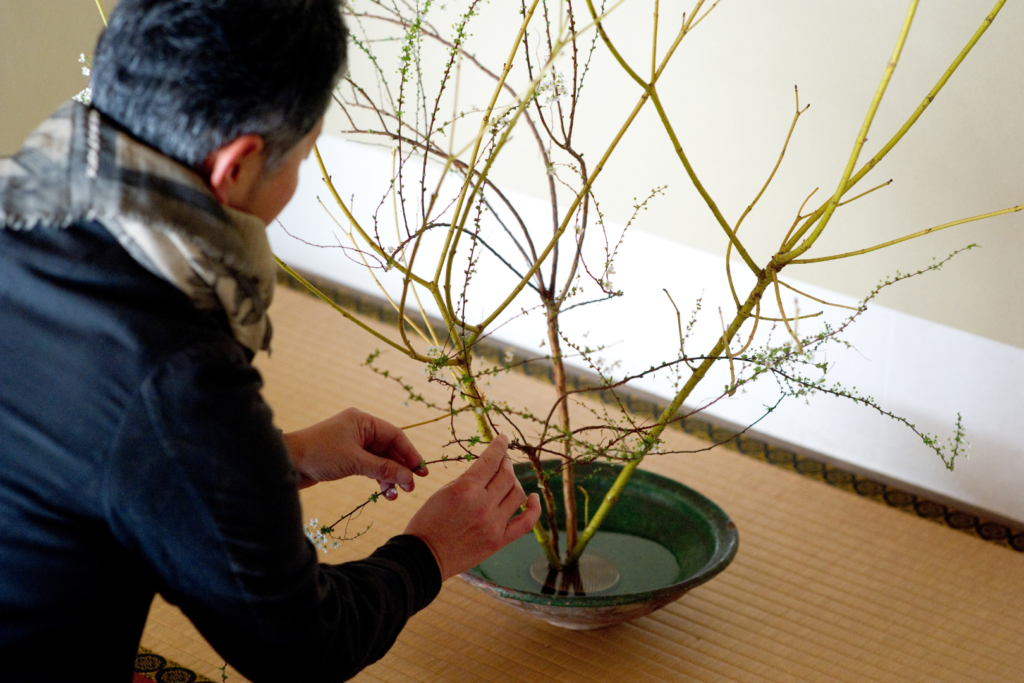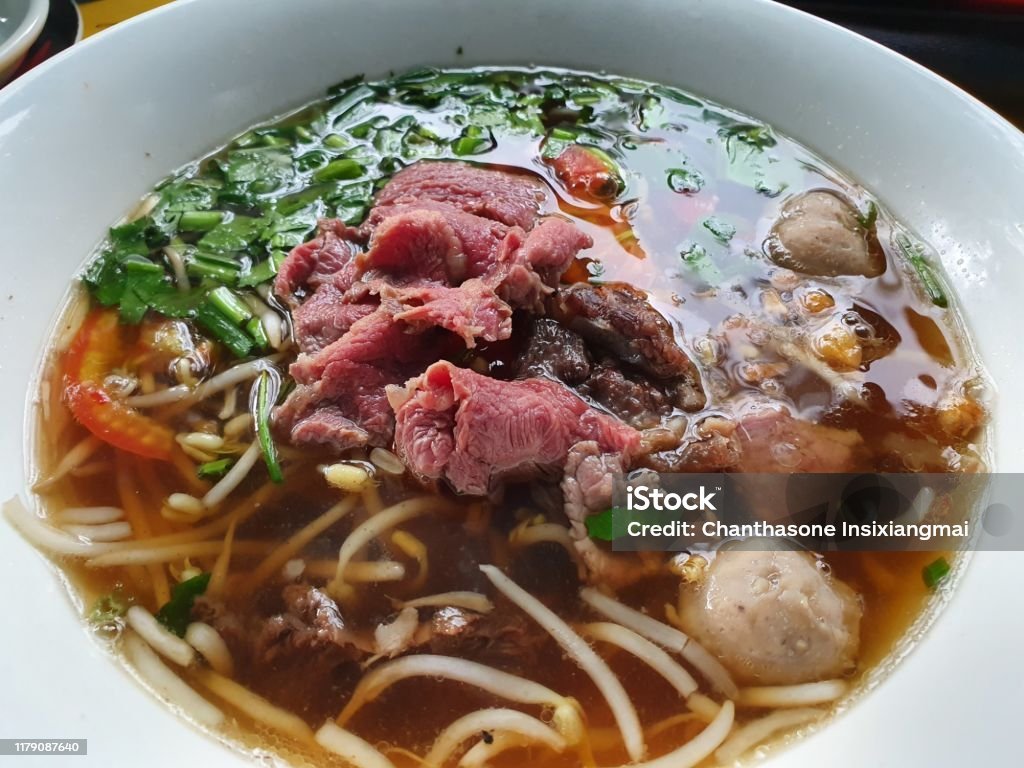
Ikebana, often referred to as the “Japanese art of flower arrangement,” is much more than simply placing flowers in a vase. This intricate art form combines flowers, plants, and natural elements in meaningful ways, reflecting the philosophy and aesthetics of Japanese culture. With a history spanning centuries, Ikebana has grown into a diverse art form with profound cultural significance, captivating people both in Japan and worldwide.
What is Ikebana?
Ikebana (生花) translates to “living flowers” in Japanese, derived from the characters 生 (Ike), meaning “life,” and 花 (Hana), meaning “flower.” This interpretation encapsulates the essence of Ikebana: bringing life to flowers through arrangement. Unlike Western floral arrangements, which often emphasize colorful, symmetrical displays, Ikebana highlights simplicity, balance, and the natural beauty of the materials.
An Ikebana arrangement incorporates not only flowers but also branches, leaves, and other plant elements. Each combination is carefully designed to convey a unique meaning or emotion, turning flower arranging into an expressive art form.

The Origins of Ikebana
Ikebana’s roots are deeply intertwined with Buddhism, which was introduced to Japan around the 6th century during the Asuka period. In Buddhist tradition, offering flowers to the Buddha was a sacred practice, and it is believed that Ikebana originated from these floral offerings.
Over time, the simple act of offering flowers evolved into a more refined practice. By the Muromachi period (1336–1573), Ikebana had emerged as a distinct art form. The integration of Ikebana with Japanese culture and aesthetics further enriched its development, leading to the creation of schools and techniques that shaped its unique identity.
The Muromachi Period: The Foundation of Ikebana as an Art
The Muromachi period is considered a turning point for Ikebana, transforming it from a ritualistic practice into an art form. During this time, the influence of Chinese culture on Japan was significant, particularly in the importation of karamono (唐物), or Chinese vases. These vases became essential tools in Ikebana and inspired the architectural style of shoin-zukuri, characterized by tatami flooring and alcoves (tokonoma) for displaying art and flower arrangements.
Ikebana arrangements placed in tokonoma required viewers to appreciate the display from a specific angle, establishing one of the fundamental principles of Ikebana that persists today.
A pivotal figure in this era was the Buddhist monk Ikenobo Senkei. Renowned for his exceptional flower arrangements, Ikenobo Senkei elevated Ikebana to new artistic heights. His work gained recognition among the samurai class and marked the formal beginning of Ikebana as an art form.

The Rise of Ikebana Schools
The influence of Ikenobo Senkei led to the establishment of the Ikenobo school, one of the oldest and most prominent Ikebana schools in Japan. Over the centuries, this school and many others developed distinct styles and techniques, contributing to the diversity of Ikebana.
Today, there are over 300 Ikebana schools in Japan. Each school adheres to its unique philosophy and style, ranging from traditional forms like Rikka (standing flowers), which emphasize grandeur and nature’s majesty, to simpler, modern styles like Shoka and Moribana.
Ikebana’s Evolution Through History
Edo Period: Expansion to the Common People
During the Edo period (1603–1868), Ikebana expanded beyond the samurai and noble classes to the common people. This growth was facilitated by the publication of instructional books that made Ikebana more accessible to a wider audience.
Styles like Rikka flourished in the homes of the aristocracy and samurai, while simpler styles like Shoka gained popularity among ordinary citizens. These developments marked a shift in Ikebana from an exclusive art form to one embraced by all levels of society.
Meiji Period: Western Influence and Gender Roles
The Meiji Restoration (1868–1912) brought significant changes to Japanese society, including increased exposure to Western culture. Ikebana adapted to this cultural shift with the introduction of new styles like Moribana, which incorporated elements of Western aesthetics.
Notably, Ikebana also became more inclusive during this time. Traditionally a male-dominated art form, Ikebana began to be taught to women, reflecting broader societal changes and expanding its appeal.
Post-War Era: Global Recognition
Following World War II, Ikebana gained international attention through large exhibitions in cities like Kyoto and Osaka. The introduction of contemporary styles such as Jiyuka (free-form) and Shinputai (new style) further modernized Ikebana, making it more accessible and appealing to global audiences.
The Principles and Philosophy of Ikebana
Ikebana is not just about arranging flowers; it embodies a deep respect for nature and emphasizes harmony, balance, and mindfulness. Key principles include:
- Asymmetry: Unlike Western floral arrangements, Ikebana often uses asymmetrical designs to reflect the natural world.
- Empty Space: The use of negative space is crucial, creating a sense of simplicity and serenity.
- Seasonality: Ikebana arrangements often incorporate elements that reflect the current season, connecting the viewer to nature’s cycles.
Practicing Ikebana encourages mindfulness and introspection, making it not only an art form but also a spiritual and meditative practice.
The Principal Schools and Styles of Ikebana
Ikebana, the Japanese art of floral arrangement, comprises various styles and schools, each with unique characteristics and symbolic meanings. These styles have evolved over centuries, reflecting both traditional and modern aesthetics. Below are the primary styles that define the art of Ikebana.
Rikka
Rikka, meaning “standing flowers,” represents one of the earliest and most formal styles of Ikebana. Emerging in the 17th century, this style evolved from the Buddhist practice of offering flowers. Rikka does not simply highlight the beauty of flowers but embodies a high regard for the universe’s structure and harmony.
Rikka arrangements typically feature tall vases and emphasize vertical lines, making it the foundation from which all other Ikebana styles developed. The key principle in Rikka is the balance between height, width, and depth, achieved by using vases with narrow mouths or tall containers. The branches are bound tightly at the base to maintain structure.
Each Rikka piece symbolizes a microcosm of the universe, characterized by its grandeur and ceremonial appearance. Often used in lavish rituals, this style served as decoration in royal palaces and aristocratic residences. Its majestic and solemn beauty makes Rikka a prominent choice for formal occasions.

Shoka
The Shoka style originated in the 17th century, blending elements of Rikka with the simplicity of Chabana, the floral arrangements for tea ceremonies. By the early 18th century, Shoka emerged as a more straightforward yet elegant style, maintaining some of Rikka’s features.
Shoka arrangements are less formal than Rikka and are often associated with home decoration. This style became particularly popular among women and was regarded as a skill that embodied the refined taste of Japanese women.
The golden age of Shoka was in the 19th century under the guidance of Ikebono Senkei. Shoka arrangements primarily feature upright forms, mimicking plants’ natural growth from the earth toward the sky. This upward movement symbolizes humanity’s aspirations for both material and spiritual fulfillment. Shoka continued to develop in stages, emphasizing harmony and natural growth.

Moribana
Moribana, meaning “piled-up flowers,” marked a significant departure from traditional vertical Ikebana styles. Developed by Unshin Ohara (1861–1916), this style introduced the use of shallow dishes and a freer arrangement of flowers, branches, leaves, and even water. Moribana is a fusion of traditional Ikebana and Western floral design, creating a modern aesthetic.
Unlike the intricate rules of Rikka, Moribana offers a relaxed and expansive presentation, with flowers spreading horizontally. This style allows for greater creativity, often replicating landscapes or garden scenes on a smaller scale.
Moribana is widely used in Western-style rooms and is versatile enough for various settings, from formal events to casual home decoration. Its natural and dynamic shapes make it a revolutionary style in Ikebana, representing freedom and innovation.

Chabana
Chabana, closely tied to Zen philosophy, embodies simplicity and natural beauty. Developed by the tea master Sen no Rikyu (1521–1591), this style contrasts sharply with the formality of Rikka. Chabana arrangements focus on highlighting the innate charm of flowers with minimal materials.
Typically featuring one or two flowers or branches in a small vase, Chabana avoids elaborate techniques. The arrangements aim to create a poetic and unpretentious beauty. Flowers are placed casually but thoughtfully, emphasizing their natural form. This style is often used as an essential element in Japanese tea ceremonies, complementing the serene atmosphere.

Free Style
Free style, or Jiyuka, is a modern approach to Ikebana that allows for personal expression and creativity. It can be further divided into naturalistic and abstract subcategories. Free style arrangements often incorporate a variety of materials, including herbs, bamboo baskets, and unconventional elements.
This style breaks away from traditional rules, adapting to modern tastes and environments. Bright flowers in light baskets during spring and summer evoke joy and vitality, while abstract forms showcase artistic innovation. Free style Ikebana is suitable for decorating homes, offices, parties, and festive events, making it a versatile and accessible art form.


Diversity and Evolution of Ikebana
The rich variety of Ikebana styles reflects its adaptability and cultural depth. From the solemn elegance of Rikka to the modern creativity of Free style, each form carries its own significance and beauty. This diversity has allowed Ikebana to flourish as both a traditional and contemporary art, gaining global recognition and admiration.
Ikebana in Modern Times
Today, Ikebana continues to evolve, blending traditional techniques with contemporary designs. Its influence extends beyond Japan, with enthusiasts and practitioners worldwide embracing this timeless art. Ikebana schools now offer classes and workshops internationally, ensuring its preservation and growth in modern times.
Modern styles like Moribana and Jiyuka have made Ikebana more accessible, allowing practitioners to experiment with diverse materials and forms. These innovations ensure that Ikebana remains relevant while staying true to its cultural roots.

Ikebana is a testament to the enduring beauty and adaptability of Japanese culture. From its origins as a Buddhist practice to its current status as a global art form, Ikebana has evolved while maintaining its core principles of harmony, balance, and respect for nature.
Whether practiced as a hobby, a meditative activity, or a professional art, Ikebana offers a unique way to connect with nature and express creativity. As it continues to flourish in modern times, Ikebana remains a timeless symbol of Japan’s artistic heritage.








